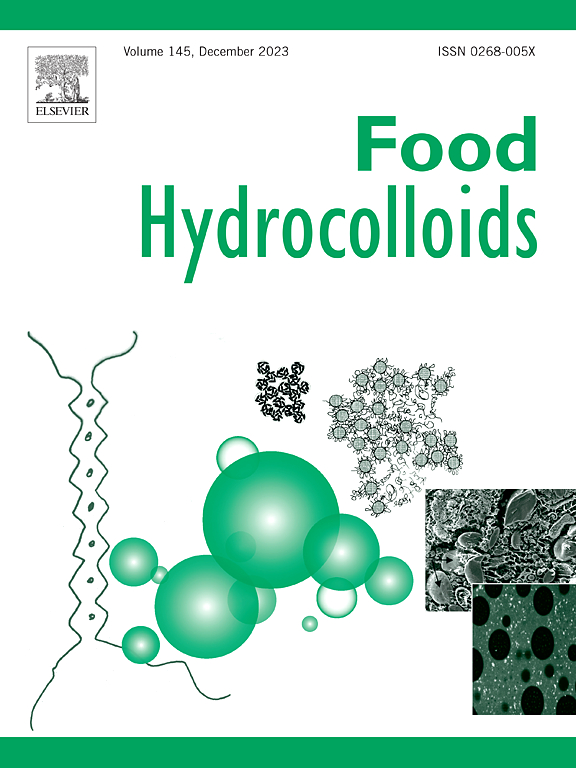Preparation of W/W emulsion gels based on chitosan and carboxymethyl cellulose via associative phase separation
IF 11
1区 农林科学
Q1 CHEMISTRY, APPLIED
引用次数: 0
Abstract
In this work, we prepared the W/W emulsion gels based on chitosan (CS) and carboxymethyl cellulose (CMC) via associative phase separation without adding any extra stabilizers. The W/W emulsion gels system with different MCS/MCMC ratios (3:1, 2:1, 1:1, 1:2, 1:3, w/w) and concentrations (1 %, 1.25 %, 1.5 %, 1.75 %, w/v) were prepared, and their corresponding properties were further investigated in the present work. FTIR demonstrated that the formation of W/W emulsion gels was driven by electrostatic interactions and hydrogen bond interactions. The CLSM results confirmed that three types of W/W emulsion gels were formed in the prepared systems, and SEM results further suggested that the gel system with 1:1 MCS/MCMC ratio was belonging to W/W emulsion droplet-aggregated gels. Moreover, for the prepared gel systems, the W/W emulsion droplet-aggregated gels with 1.5 % polymer concentration and 1:1 MCS/MCMC ratio showed the most uniform three-dimensional network structure, the best rheological and mechanical properties, as well as the highest swelling ratio. Overall, these findings provide new reference for the preparation of W/W emulsion gels based on associative phase separation without adding any extra stabilizers.

求助全文
约1分钟内获得全文
求助全文
来源期刊

Food Hydrocolloids
工程技术-食品科技
CiteScore
19.90
自引率
14.00%
发文量
871
审稿时长
37 days
期刊介绍:
Food Hydrocolloids publishes original and innovative research focused on the characterization, functional properties, and applications of hydrocolloid materials used in food products. These hydrocolloids, defined as polysaccharides and proteins of commercial importance, are added to control aspects such as texture, stability, rheology, and sensory properties. The research's primary emphasis should be on the hydrocolloids themselves, with thorough descriptions of their source, nature, and physicochemical characteristics. Manuscripts are expected to clearly outline specific aims and objectives, include a fundamental discussion of research findings at the molecular level, and address the significance of the results. Studies on hydrocolloids in complex formulations should concentrate on their overall properties and mechanisms of action, while simple formulation development studies may not be considered for publication.
The main areas of interest are:
-Chemical and physicochemical characterisation
Thermal properties including glass transitions and conformational changes-
Rheological properties including viscosity, viscoelastic properties and gelation behaviour-
The influence on organoleptic properties-
Interfacial properties including stabilisation of dispersions, emulsions and foams-
Film forming properties with application to edible films and active packaging-
Encapsulation and controlled release of active compounds-
The influence on health including their role as dietary fibre-
Manipulation of hydrocolloid structure and functionality through chemical, biochemical and physical processes-
New hydrocolloids and hydrocolloid sources of commercial potential.
The Journal also publishes Review articles that provide an overview of the latest developments in topics of specific interest to researchers in this field of activity.
 求助内容:
求助内容: 应助结果提醒方式:
应助结果提醒方式:


